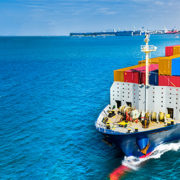Chilled to Perfection: Exploring the Benefits of Insulated Shipping Container Liners (Thermal Liners)
The thermal liners have myriad benefits, including the provision of temperature-sensitive shipments. Whether you’re transporting perishable goods, pharmaceuticals, or any product that requires temperature control, the key to success is preserving your cargo’s quality and integrity throughout the journey.
Understanding Thermal Liners
Thermal liners are designed and engineered to provide temperature insulation within shipping containers. These liners come in various forms, including blankets, roll-up curtains, and flexible wall systems. The primary goal is to create a controlled and insulated environment within the container, maintaining the desired temperature range for the cargo.
Now, let’s delve into the incredible benefits that thermal liners bring to the table:
- Preservation of Cargo Quality:
Imagine you’re shipping a cargo of fresh fruits from one corner of the world to another. Without proper temperature control, your fruits may arrive at their destination bruised, overripe, or spoiled. They protect against temperature fluctuations, ensuring that your cargo reaches its destination in optimal condition. Whether it’s fruits, vegetables, seafood, or pharmaceuticals, preserving cargo quality is paramount, and thermal liners excel in this regard.
- Temperature Consistency:
Maintaining a consistent temperature throughout the journey is challenging, especially when dealing with long-distance shipments. They rise to the occasion by creating a stable and controlled environment within the container. They prevent heat or cold spots and minimize the risk of cargo damage due to temperature variations.
- Energy Efficiency:
Traditional temperature-controlled containers often rely on external refrigeration units, which consume significant energy. It reduce the need for these external systems by providing insulation. This saves energy and reduces operational costs, making it a cost-effective solution for temperature-sensitive cargo.
- Flexible and Versatile:
Thermal liners are highly adaptable and can be customized to fit various container sizes and shapes. Thermal liners can be tailored to your specific needs, whether using a standard 20-foot container or a larger 40-foot container. This adaptability ensures you have the right solution for your cargo, regardless of volume
- Easy Installation and Removal:
One of the key advantages of thermal liners is their ease of installation and removal. They can be quickly set up when needed and removed when not in use, allowing you to switch between temperature-sensitive and standard cargo shipments easily.
- Environmental Considerations:
In today’s environmentally conscious world, reducing carbon footprints and promoting sustainability is paramount. Thermal liners align with these goals by minimizing energy consumption, reducing waste from damaged cargo, and extending the shelf life of perishable goods. By choosing thermal liners, you’re protecting your cargo and contributing to a greener supply chain.
Real-World Applications
Now that we’ve uncovered the incredible benefits of thermal liners let’s take a glimpse into how they are transforming industries across the globe:
1. Food and Beverage Industry:
The food and beverage industry relies heavily on thermal liners to transport dairy, frozen foods, and beverages. Whether ice cream on a scorching summer day or fine wine on a transoceanic journey, thermal liner ensure that temperature-sensitive products are delivered to consumers in perfect condition.
2. Pharmaceuticals and Healthcare:
The pharmaceutical and healthcare sectors place a premium on maintaining the integrity of their products. Medications, vaccines, and sensitive medical equipment require precise temperature control during transportation. Thermal liner provide a safe and consistent environment, ensuring that these critical products remain effective and safe for use.
3. Chemicals and Petrochemicals:
Chemical products often have specific temperature requirements to prevent degradation or hazardous reactions. Thermal liner play a vital role in ensuring that chemicals are transported safely and in compliance with regulatory standards.
4. Agriculture and Horticulture:
Perishable goods like fruits, vegetables, and flowers must be fresh during transportation. Thermal liner create the ideal microclimate, preserving the quality of agricultural products and extending their shelf life.
5. Electronics and Technology:
Sensitive electronic components and technology equipment can be adversely affected by temperature extremes. They protect these valuable assets, ensuring they arrive in perfect working condition.
Bottom Line
In the intricate web of global trade and logistics, the importance of preserving the quality and integrity of temperature-sensitive cargo cannot be overstated. This is where thermal liner step in, shielding against temperature fluctuations, ensuring cargo quality, and promoting sustainability.
From the food and beverage industry to pharmaceuticals, chemicals, and beyond are making their mark by revolutionizing temperature-sensitive cargo transportation. They are a testament to human ingenuity and innovation, offering a practical and cost-effective solution to the challenges of the modern supply chain.
So, whether you’re shipping fresh produce, life-saving medications, or delicate electronics, consider the power of thermal liners to ensure that your cargo arrives “chilled to perfection.”
Why Fluid Flexitanks
Don’t compromise on cargo quality—choose thermal liners for the ultimate in temperature-controlled shipping. Experience the transformative benefits of thermal liners for your temperature-sensitive cargo. Contact us today to explore how thermal liners can elevate your logistics and supply chain, ensuring that your products arrive in perfect condition every time.










